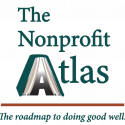Using Analytics To Amplify Your Nonprofit’s Impact And Earn Donor Trust

Philanthropy has moved beyond simple financial contributions. Today’s donors want transparency, measurable outcomes, and active participation in the causes they support. This shift highlights the need for nonprofits to adopt data-driven strategies that enhance decision-making and program effectiveness while fostering deeper donor relationships.
Leveraging data can strengthen impact and build lasting donor trust. Below are four key principles that integrate strong business practices with a passion for social change, leading to better outcomes for organizations and more engaged supporters.
1. Apply Business Principles to Nonprofit Management
Successful businesses thrive by setting clear goals, following structured plans, and using performance metrics to guide decisions. Nonprofits can achieve greater efficiency by adopting similar practices. Simple actions like defining quarterly objectives and holding regular strategy meetings can keep initiatives focused and on track.
This level of organization also reassures donors that their contributions are being used effectively. When nonprofits set measurable goals—such as improving student test scores by a specific percentage—and provide data-backed progress reports, they build credibility. A well-structured approach not only increases the likelihood of achieving meaningful results but also strengthens donor confidence.
2. Engage Donors as Partners in Change
True philanthropic impact goes beyond financial support. While donations are essential, meaningful donor relationships involve collaboration, expertise-sharing, and strategic input. Increasingly, donors want to contribute more than money—they want to be active participants in solving challenges.
For example, a donor with financial expertise might provide budgeting advice, while someone with a technology background could recommend data management tools. By engaging donors as strategic partners, nonprofits tap into valuable resources while fostering a stronger sense of shared investment. As a result, donors feel more connected to the mission and are likely to increase their involvement over time.
3. Use Data to Demonstrate Impact
Donors want to see the tangible outcomes of their contributions. A compelling success story, backed by clear data, illustrates how their support drives change. Simply stating that an organization “helped people” is no longer sufficient—supporters want evidence of long-term, scalable results.
Consider a program that trains individuals in entrepreneurship. By tracking each step—from training and financial growth to broader economic impact—nonprofits can demonstrate the effectiveness of their efforts. When organizations align compelling narratives with measurable data, they create transparency and accountability. This, in turn, deepens donor trust and encourages continued support.
4. Implement a Strategic Donor Journey
Sustaining long-term funding requires a structured approach to donor engagement. Moves management is a strategy that guides donors from one-time contributions to ongoing, larger commitments, including multiyear gifts or planned giving. Key elements of this approach include:
Personalized Communication: Tailoring updates to donor interests fosters a stronger connection to the cause.
Active Involvement: Inviting donors to participate in events, discussions, or volunteer opportunities enhances their engagement.
Dedicated Relationship Management: Skilled donor-relations teams track interactions and present giving opportunities aligned with donor priorities.
By nurturing long-term donor relationships, nonprofits create a stable funding base that can endure economic fluctuations. This approach transforms supporters into long-term mission advocates rather than one-time contributors.
Merging Passion with Strategy
The most effective philanthropy combines heart and analytical rigor. Nonprofits that integrate strategic planning, collaborative donor relationships, and data-driven decision-making can amplify their impact and build sustained support.
A well-structured, transparent approach reassures donors that their contributions are making a measurable difference. In turn, this fosters stronger partnerships and a lasting commitment to social change.
Source: Forbes
The Nonprofit Atlas connects the dots for any “do-gooders” to do the most good. We provide the roadmap to doing good well. We simplify the work of securing resources, relationships, and best practices that fuel a mission and realize a vision. See us in action with a FREE 30-minute consultation.
